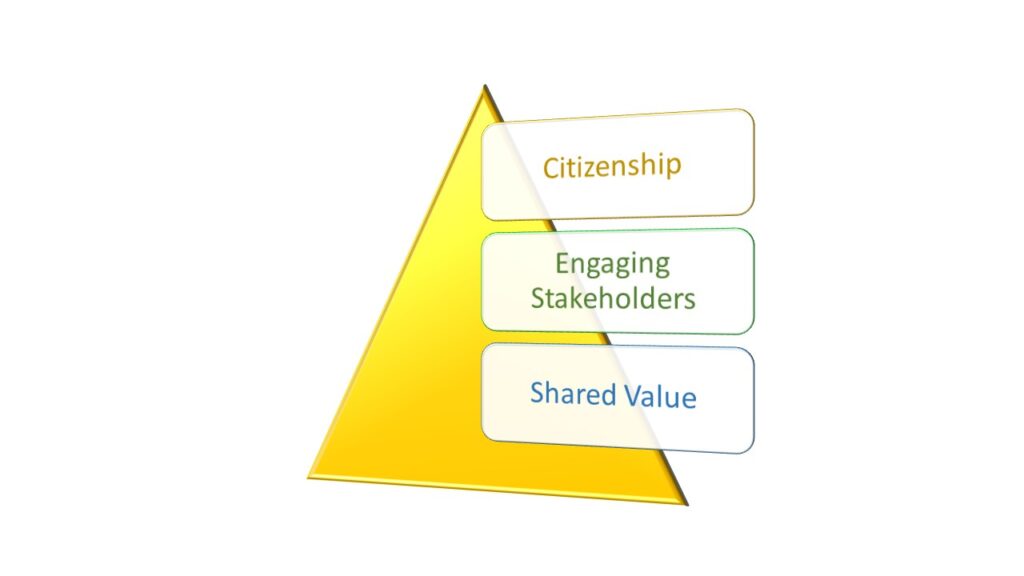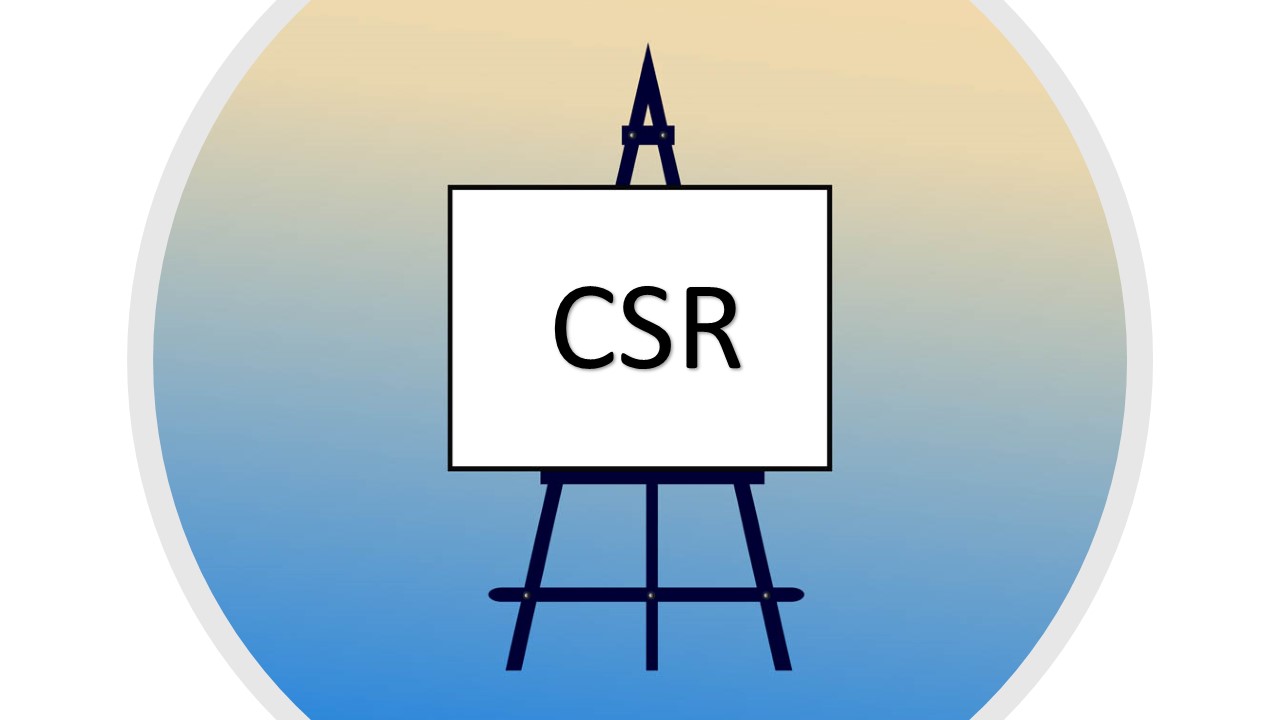Why do we use a tripod for camera or why were the blackboards in yesteryears classrooms on a tripod? Triangles always define the plane no matter where the vertices of the triangle lie. The three-leg formation is a circle and that is the best way to balance. If the ground is not exactly at the same level or any one leg is not the same as the others, then stability on a four-legged stool becomes difficult, but that is not the case with a tripod.
If an organization is looking at a balanced and stable Corporate Social Responsibility (CSR) strategy, it must include the three dimensions. The 3-dimensional model discussed below is something I have been recommending to many companies while consulting with them.

Citizenship: This refers to establishing partnerships to overcome the challenges faced by society and addressing the issues prevalent in the community as a good corporate citizen. This improves trust in the society as the organization operates and helps improve the social license to operate. The work the organization undertakes will be completely disconnected to the business. For example, a bank working on addressing the malnutrition challenges in society or a mining company taking up a project around autism in school children.
Engagement with stakeholders: CSR can be leveraged to effectively engage with stakeholders in the value chain. Take the case of an automobile company working on a project related to the health of truck drivers. The organization gathers better goodwill from the value chain partners and it also improves the brand recall factor.
Shared Value: Although it might sound similar to the earlier dimension, but in this case, there is good clarity as to what benefits will accrue for the organization apart from intangible values. The benefits can result from efficiency to quality improvements. Consider a project where a dairy works with the milk farmers in improving their productivity through improved livestock management. The project benefits the farmer through improved productivity while also directly improving the quality of milk for the company.
Since most readers of my articles are from India, the question will now arise as to whether shared value projects are qualified under the CSR regulations in India. The regulations do not state anywhere specifically that shared value projects cannot qualify as CSR projects. But it does specify that any expenditure on a project that can be qualified as a normal course of business will not qualify as CSR expenditure. It seeks the CSR Committee of the Board to use its interpretation to qualify what is normal course of business. So, for the readers who have this question, my answer will be that some shared value project expenditure might qualify and some may not, as part of compliance. But my objective of this article is to bring out that a balanced and stable CSR strategy should include all these 3 dimensions.
The 3 dimensions need not always be exclusive to each other. Take the case of employee volunteering, although it might be part of the strategy of engagement with stakeholders, the project where the employee volunteers can be a citizenship project or a shared value project. But while developing the CSR strategy an organization has to keep in mind all the 3 dimensions. It helps to create a stable and balanced strategy, like a tripod to a photographer.

The thoughts have been put forth quite well. I was pondering on what you have written about citizen ship and shared value. Under citizenship you have said that “the work the organization undertakes will be completely disconnected to the business” and have stated two examples. While under shared value you have stated “there is good clarity as to what benefits will accrue for the organization apart from intangible values.” So I just feel there seems to be a bit of contradiction here. Would you be kind enough to elaborate?
Indeed a different perspective on shared value vs qualification as a CSR spent.
Thank you sir for sharing this with us.
I have been working in the field of CSR from last 9 years with various organizations and have realized what you have shared in this post. However, I see CSR from other four dimensions-
1. Resources- We definitely need resources to conduct/execute our CSR programs.
2. Partners- We need experienced professionals to conduct our CSR programs. We need stakeholders which can assist us in the effective execution of the CSR programs.
3. People- We need a target population to approach and plan accordingly to fulfill our goals.
4. Publish/Document- Showcasing CSR programs through annual reports and other related publications is still challenging for many organizations.
No Contradiction. I am suggesting that any organisation should include all 3 legs in devising the strategy and not any one. So there has to be initiatives which are disconnected to business, there has to be projects which are in the value chain and there is need for shared value projects also. It cannot be one of the 3.